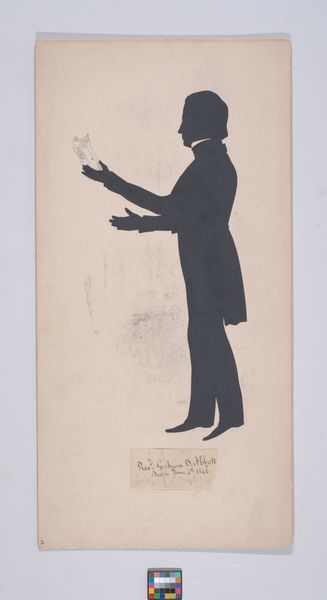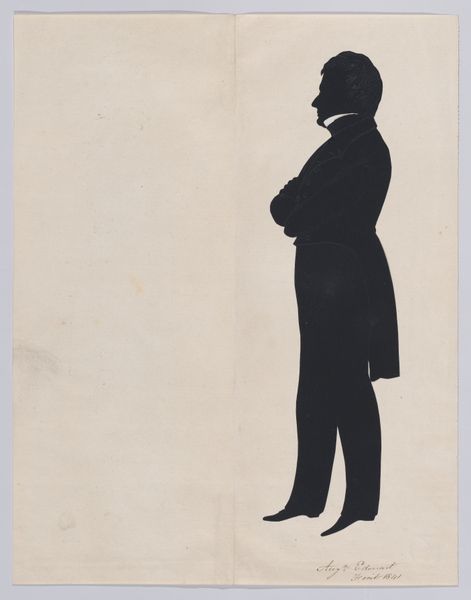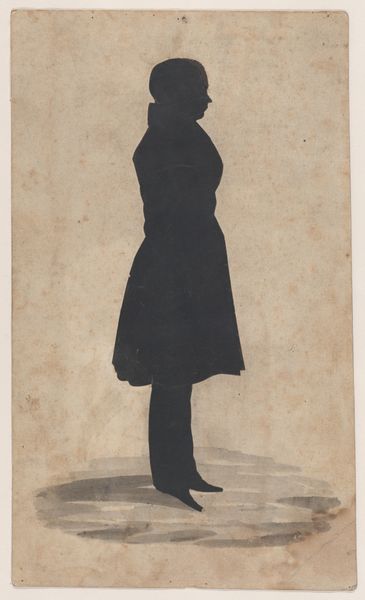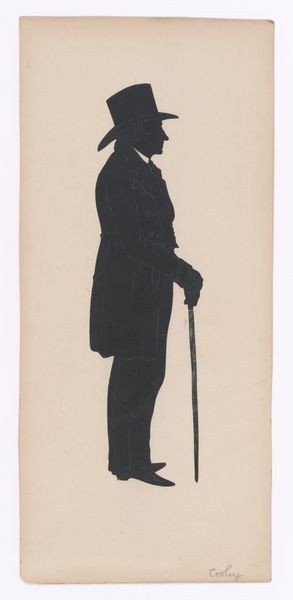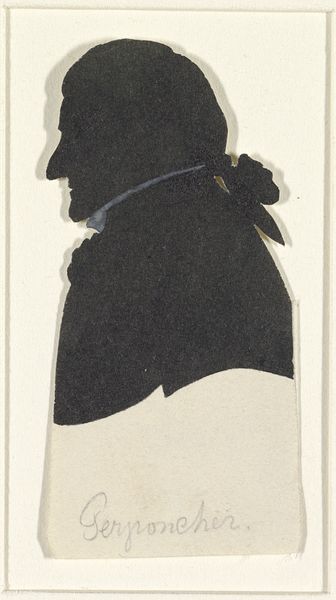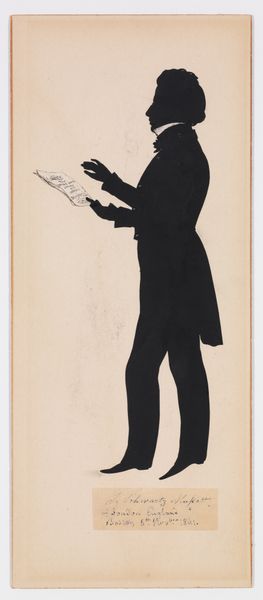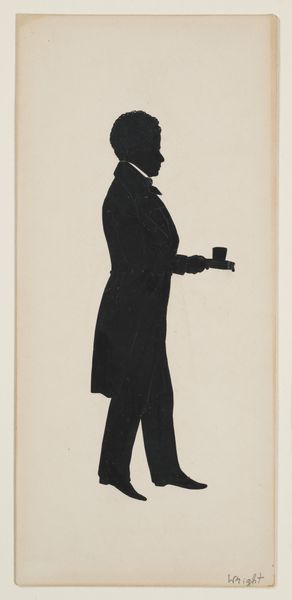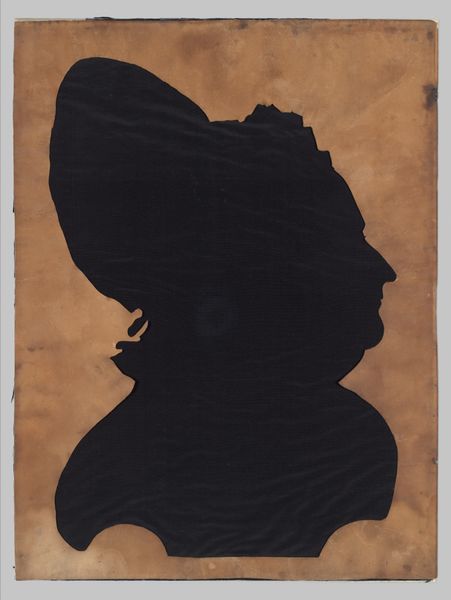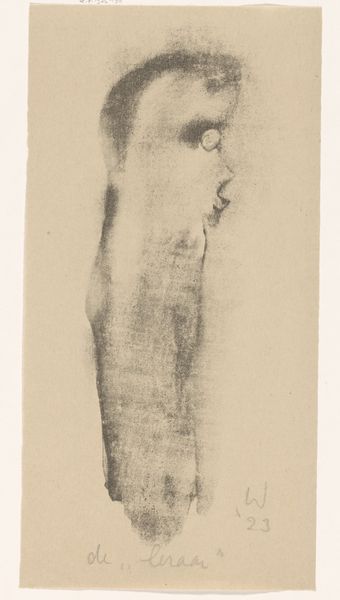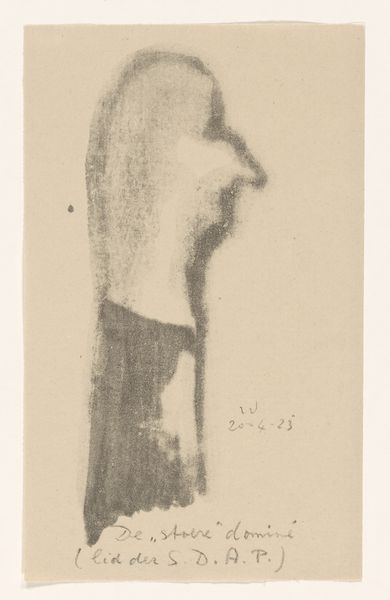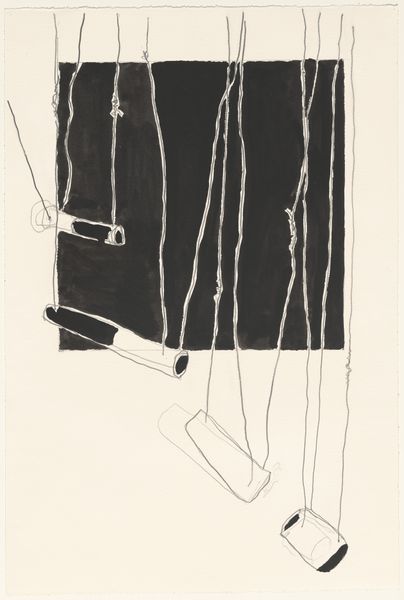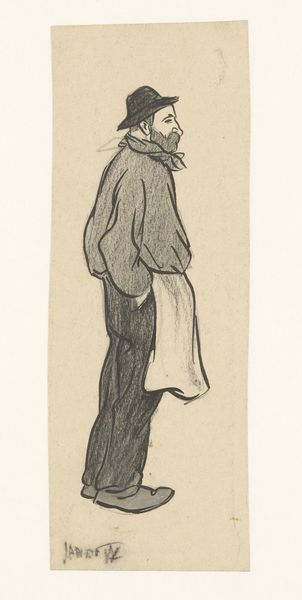
drawing, print, paper
#
drawing
# print
#
paper
#
men
#
watercolour illustration
Dimensions: Image: 8 1/4 × 2 3/8 in. (21 × 6 cm)
Copyright: Public Domain
Editor: Here we have Auguste Edouart’s "Henry B. Humphrey of Boston," created in 1844, a silhouette crafted from paper. It’s quite striking in its starkness – a man rendered in pure black against a plain background. What can you tell me about it? Curator: What I see here is more than just a portrait; it's a document reflecting the social codes and power structures of 19th-century America. Silhouette art was an accessible form of portraiture, yet access itself was mediated by class and race. Editor: How so? Curator: Well, consider who could afford even this modest representation and whose likeness was deemed worthy of preservation. Humphrey's confident stance, arms crossed, speaks to a certain social standing. How might we interpret this image through the lens of, say, critical race theory? Was silhouette art a space where marginalized communities could subvert dominant representation, or was it simply another tool for upholding the status quo? Editor: That’s fascinating; I hadn’t considered that. I guess I saw it as a straightforward depiction, but you're right – the very act of choosing who gets represented is a statement in itself. It also shows the time period. Curator: Precisely. By questioning whose stories are told and how, we can begin to unpack the complex politics embedded within seemingly simple images. It is vital for us to remember this. Editor: I will certainly view portraiture in a different way from now on. Thanks for making it more relevant!
Comments
No comments
Be the first to comment and join the conversation on the ultimate creative platform.
